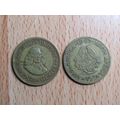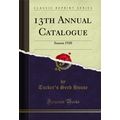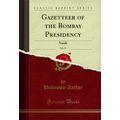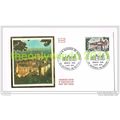Bosch, Hieronymus - Hay Waggon/ Haywain / Der Heuwagen - art postcard
- Condition : Used
- Dispatch : 2 Days
- Brand : None
- ID# : 138251157
- Quantity : 1 item
- Views : 605
- Location : United Kingdom

- Seller : justthebook (+1704)
- Barcode : None
- Start : Fri 10 Apr 2015 04:10:59 (EDT)
- Close : Run Until Sold
- Remain : Run Until Sold
Checks/Cheques
 for 1 item(s) edit
for 1 item(s) edit
Shipping Calculator
More Listings from This Seller view all
Seller's Description
- Art Postcard
- Work of art title: The Hay Waggon / Der Heuwagen [or Haywain] [from a tryptich]
- Artist (if known): Hieronymus Bosch
- Media or other details: painting
- Publisher / Gallery: Prado Museum, Madrid / Anton Schrooll & Co.
- Postally used: no
- Stamp & postmark details (if relevant): na
- Size: modern
- Notes & condition details:
NOTES:
Size: 'Modern' is usually around 6in x 4in / 'Old Standard' is usually around 5 1/2in x 3 1/2in. Larger sizes mentioned, but if you need to know the exact size please ask.
All postcards are not totally new and are pre-owned. It's inevitable that older cards may show signs of ageing and use, particularly sent through the post. Any faults other than normal ageing are noted.
Stock No.: A691
------------------------------------------------
Postage & Packing:
Postage and packing charge should be showing for your location (contact if not sure).
No additional charges for more than one postcard. You can buy as many postcards from me as you like and you will just pay the fee above once. Please wait for combined invoice. (If buying postcards with other things such as books, please contact or wait for invoice before paying).
Payment Methods:
UK - PayPal, Cheque (from UK bank) or postal order
Outside UK: PayPal ONLY (unless otherwise stated) please. NO non-UK currency checks or money orders (sorry).
NOTE: All postcards are sent in brand new stiffened envelopes which I have bought for the task. These are specially made to protect postcards and you may be able to re-use them. In addition there are other costs to sending so the above charge is not just for the stamp!
I will give a full refund if you are not fully satisfied with the postcard.
----------------------------------------------
Text from the free encyclopedia WIKIPEDIA may appear below to give a little background information:
*************
Hieronymus Bosch (/?ha?.?'r?n?m?s 'b??/;[1] Dutch: [?ije?'ro?nim?z 'b?s];[2] born Jheronimus van Aken[3] [je?'ro?nim?s f?n 'a?k?(n)];[2] c. 1450 – 9 August 1516) was an Early Netherlandish painter. His work is known for its fantastic imagery, detailed landscapes and illustrations of moral and religious concepts and narratives.[4] Within his lifetime his work was collected in the Netherlands, Austria, and Spain, and widely copied, especially his macabre and nightmarish depictions of hell.
Little is know of Bosch's life, though there are some records. He spent most of it in the town of 's Hertogenbosch, though his roots are from Aachen, Germany. His pessimistic and fantastical style cast a wide influence on northern art of the 16th century, with Pieter Bruegel the Elder his best known follower. His paintings have been difficult to translate from a modern point of view; attempts to associate instinances of modern sexual imagery with fringe sects or the occult have largely failed. Today he is seen as a hugely individualistic painter with deep insight into man's desires and deepest fears. Attribution has been especially difficult; today only 35 to 40 paintings are confidently given to his hand. His most acclaimed works consist of a few triptych alterpieces, the most outstanding of which is the Garden of Earthly Delights. His best surviving panels make innovative use of oil paint and especially glazed finish.
Hieronymus Bosch was born Jheronimus (or Joen,[5] respectively the Latin and Middle Dutch form of the name ""Jerome"") van Aken (meaning ""from Aachen""). He signed a number of his paintings as Jheronimus Bosch (pronounced Yeronimus Bos[needs Dutch IPA] in Middle Dutch).[6] The name derives from his birthplace, 's-Hertogenbosch, which is commonly called ""Den Bosch"" ('the forest').
Little is known of Bosch’s life or training. He left behind no letters or diaries, and what has been identified has been taken from brief references to him in the municipal records of 's-Hertogenbosch, and in the account books of the local order of the Illustrious Brotherhood of Our Blessed Lady. Nothing is known of his personality or his thoughts on the meaning of his art. Bosch’s date of birth has not been determined with certainty. It is estimated at c. 1450 on the basis of a hand drawn portrait (which may be a self-portrait) made shortly before his death in 1516. The drawing shows the artist at an advanced age, probably in his late sixties.[7]
Bosch was born and lived all his life in and near ‘s-Hertogenbosch, a city in the Duchy of Brabant. His grandfather, Jan van Aken (died 1454), was a painter and is first mentioned in the records in 1430. It is known that Jan had five sons, four of whom were also painters. Bosch’s father, Anthonius van Aken (died c. 1478), acted as artistic adviser to the Illustrious Brotherhood of Our Blessed Lady.[8] It is generally assumed that either Bosch’s father or one of his uncles taught the artist to paint, but none of their works survive.[9] Bosch first appears in the municipal record on 5 April 1474, when he is named along with two brothers and a sister.
The Haywain Triptych is a panel painting by Hieronymus Bosch, currently housed in the Museo del Prado, Madrid, Spain. A date of around 1516 has been established by means of dendrochronological research. The central panel, signed ""Jheronimus Bosch"", measures 135 by 200 centimeters and the wings measure 147 x 66 cm. The outside shutters feature a version of Bosch's The Wayfarer.
The painting was part of a group of six acquired by king Philip II of Spain in 1570, and shipped to El Escorial four years later. It was later sold to the Marquis of Salamanca, and divided into three paintings. In 1848, the central panel was bought by Isabella II of Spain and brought to Aranjuez, the right one was returned to Escorial and the left went to the Prado. The triptych was finally recomposed in 1914 in the latter museum.[1] A copy exists at the Escorial.
The exterior of the shutters, like most contemporary Netherlandish triptychs, were also painted, although in this case Bosch used full colors instead of the usual grisaille. When closed, they form a single scene depicting a wayfarer. Around him is a series of miniatures including the robbery of another wayfarer and a hanged man. The man uses a stick to repel a dog.
According to the most recent interpretations, this figure may represent the man who follows his road in spite of the temptation of sins (such as lust, perhaps symbolized by the two dancing shepherds) and the evil acts occurring around him.[1]
The Haywain triptych follows a similar narrative to The Garden of Earthly Delights. The left panel shows God giving form to Eve. Unlike the Garden, though, a narrative sequence flows through the panel in different scenes. At the top, the rebel angels are cast out of Heaven while God sits enthroned, the angels turning into insects as they break through the clouds. Below this, God creates Eve from the rib of Adam. Next, Adam and Eve find the serpent and the tree; the serpent offers them an apple. Finally, at the lowest part of the panel, the angel forces the two out of the Garden of Eden. Adam speaks with the angel; Eve, in a melancholic pose, looks ahead to the right.
The central panel features a large wagon of hay surrounded by a multitude of fools engaged in a variety of sins, quite apart from the sins of lust which dominates the Garden of Earthly Delights. In the center panel Bosch shows Christ in the sky, not paralleled in the Garden. An angel on top of the wagon looks to the sky, praying, but none of the other figures see Christ looking down on the world. The rightward bow of the figures around the wagon provides the force for the viewer’s eye to move with them on their journey and the cart is drawn by infernal beings which drag everyone to Hell, depicted on the right panel.
The forward kinetic motion of the participants moves the viewer from present-day sin into unadulterated torture in the realms of Hell. The procession on the left side of this panel bends back into the middle ground, but the right side figures continue in a straight line with the wagon, a more evident progress into damnation.[2]
type=printed postcards
theme=artists signed
sub-theme=art
number of items=single
period=1945 - present
postage condition=unposted
Listing Information
| Listing Type | Gallery Listing |
| Listing ID# | 138251157 |
| Start Time | Fri 10 Apr 2015 04:10:59 (EDT) |
| Close Time | Run Until Sold |
| Starting Bid | Fixed Price (no bidding) |
| Item Condition | Used |
| Bids | 0 |
| Views | 605 |
| Dispatch Time | 2 Days |
| Quantity | 1 |
| Location | United Kingdom |
| Auto Extend | No |














